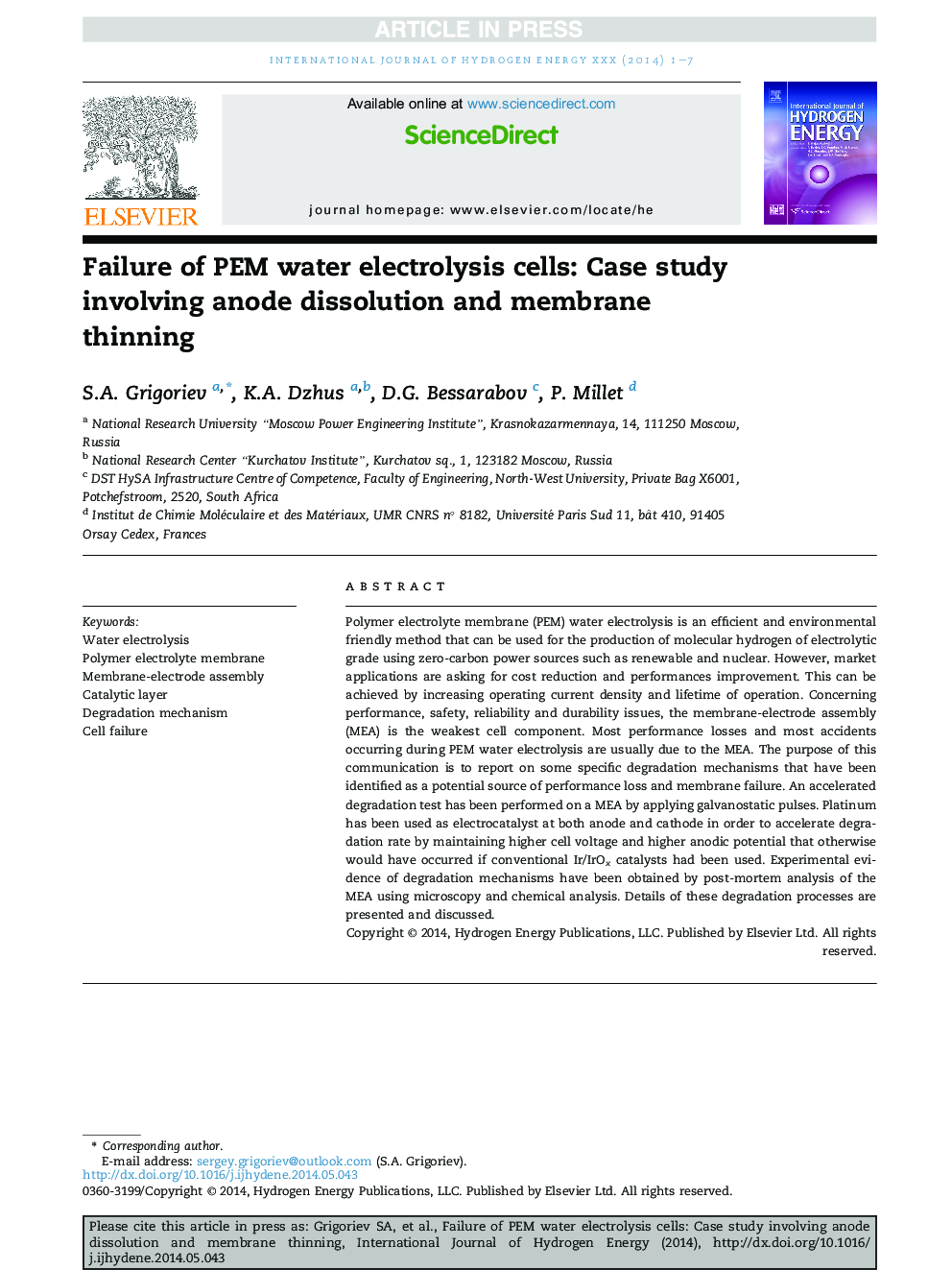| کد مقاله | کد نشریه | سال انتشار | مقاله انگلیسی | نسخه تمام متن |
|---|---|---|---|---|
| 7717968 | 1497474 | 2014 | 7 صفحه PDF | دانلود رایگان |
عنوان انگلیسی مقاله ISI
Failure of PEM water electrolysis cells: Case study involving anode dissolution and membrane thinning
دانلود مقاله + سفارش ترجمه
دانلود مقاله ISI انگلیسی
رایگان برای ایرانیان
کلمات کلیدی
موضوعات مرتبط
مهندسی و علوم پایه
شیمی
الکتروشیمی
پیش نمایش صفحه اول مقاله

چکیده انگلیسی
Polymer electrolyte membrane (PEM) water electrolysis is an efficient and environmental friendly method that can be used for the production of molecular hydrogen of electrolytic grade using zero-carbon power sources such as renewable and nuclear. However, market applications are asking for cost reduction and performances improvement. This can be achieved by increasing operating current density and lifetime of operation. Concerning performance, safety, reliability and durability issues, the membrane-electrode assembly (MEA) is the weakest cell component. Most performance losses and most accidents occurring during PEM water electrolysis are usually due to the MEA. The purpose of this communication is to report on some specific degradation mechanisms that have been identified as a potential source of performance loss and membrane failure. An accelerated degradation test has been performed on a MEA by applying galvanostatic pulses. Platinum has been used as electrocatalyst at both anode and cathode in order to accelerate degradation rate by maintaining higher cell voltage and higher anodic potential that otherwise would have occurred if conventional Ir/IrOx catalysts had been used. Experimental evidence of degradation mechanisms have been obtained by post-mortem analysis of the MEA using microscopy and chemical analysis. Details of these degradation processes are presented and discussed.
ناشر
Database: Elsevier - ScienceDirect (ساینس دایرکت)
Journal: International Journal of Hydrogen Energy - Volume 39, Issue 35, 3 December 2014, Pages 20440-20446
Journal: International Journal of Hydrogen Energy - Volume 39, Issue 35, 3 December 2014, Pages 20440-20446
نویسندگان
S.A. Grigoriev, K.A. Dzhus, D.G. Bessarabov, P. Millet,